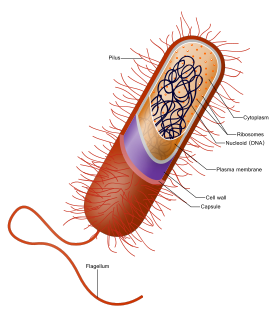Cell (biology)

The cell (from Latin cella, meaning “small room”[1]) is the basic structural, functional, and biological unit of all known organisms. Cells are the smallest units of life, and hence are often referred to as the “building blocks of life”. The study of cells is called cell biology, cellular biology, or cytology.
Cells consist of cytoplasm enclosed within a membrane, which contains many biomolecules such as proteins and nucleic acids.[2] Most plant and animal cells are only visible under a light microscope, with dimensions between 1 and 100 micrometres.[3] Electron microscopy gives a much higher resolution showing greatly detailed cell structure. Organisms can be classified as unicellular (consisting of a single cell such as bacteria) or multicellular (including plants and animals).[4] Most unicellular organisms are classed as microorganisms.
The number of cells in plants and animals varies from species to species; it has been estimated that humans contain somewhere around 40 trillion (4×1013) cells.[a][5] The human brain accounts for around 80 billion of these cells.[6]
Cells were discovered by Robert Hooke in 1665, who named them for their resemblance to cells inhabited by Christian monks in a monastery.[7][8] Cell theory, first developed in 1839 by Matthias Jakob Schleiden and Theodor Schwann, states that all organisms are composed of one or more cells, that cells are the fundamental unit of structure and function in all living organisms, and that all cells come from pre-existing cells.[9] Cells emerged on Earth at least 3.5 billion years ago.[10][11][12]
